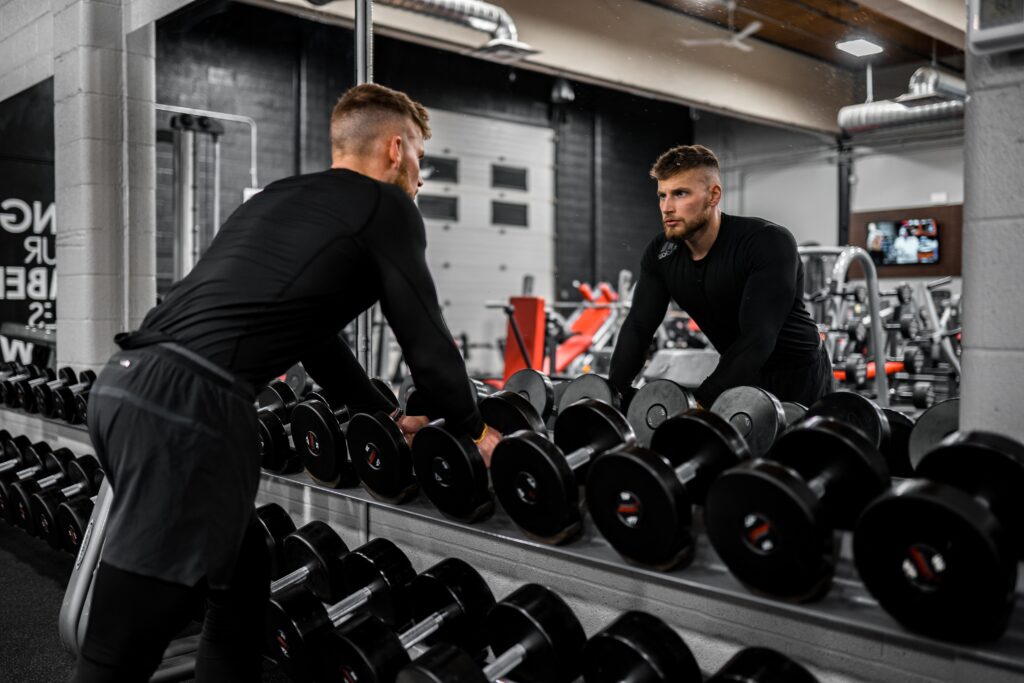Do I Need to Periodize?
The main value of periodization for all trainees comes from the fact that you cannot optimally impro...
| June 14, 2021
By Trevor Mah
Warning: Undefined variable $post in /home/u355111447/domains/wellnessadept.com/public_html/wp-content/plugins/oxygen/component-framework/components/classes/code-block.class.php(115) : eval()'d code on line 3
Warning: Attempt to read property "ID" on null in /home/u355111447/domains/wellnessadept.com/public_html/wp-content/plugins/oxygen/component-framework/components/classes/code-block.class.php(115) : eval()'d code on line 3
Read time: 4 min.

When it comes to working out our muscles, there is a lot being worked on beyond what you see and possibly feel. The human body has hundreds of muscles and while the main ones get all the attention (such as pecs, quads, glutes, biceps, etc.), there are many smaller muscles that work behind the scenes to make sure your body is a well oiled machine. Small muscles usually aren’t as fun to train, and sometimes hard to really target for some individuals.
Similarly, these and other muscles aren’t quite as noticeable so it’s easy for them to get lost in the mix of your training program. But once you give them the attention they deserve, you’ll reap many benefits including better strength, movement, and reduce your chances of injuries.
Please also note that if you are recovering from an injury or feel pain in performing certain exercises, listen to your body if something doesn’t feel right. If you are working with a physiotherapist, listen to them even if these suggestions overlap with their recommendations.
A solid training program doesn’t necessarily narrow down to specific workouts for these muscles, as many compound lifts and a balanced workout will likely still work them indirectly. Your body works as a kinetic chain that is only as strong as its weakest link. Give some attention to these parts and see how they can benefit you. While this is not a complete list, here are a few to get you started.
Piriformis
Located in your gluteal region, the piriformis can actually be a fairly overworked muscle if your hamstrings or glutes are underactive. These are the big muscles that should be doing most of the work, but when not properly fired up then the piriformis has to pick up the slack. When this happens often, it can lead to hip and lower back pain.
What can you do?
In this case, a good chunk of the solution lies in properly mobilizing your hips to get your glutes and hamstrings active. Unfortunately, it is common that they are “asleep” if you spend a lot of time sitting and don’t regularly train the lower body. Drills such as pigeon stretches, single leg hip lifts, and sprinter stretches can all get these muscles moving, blood flowing, and loosened up. Soft tissue work with a foam roller or other implement can help unstick tacked down soft tissue in this area as well. Once your hips are able to move better, then many corresponding lower body exercises should begin to work the right muscles.
Rotator Cuff (Supraspinatus, Infraspinatus, Teres Minor & Subscapularis)
It’s a bit of a mouthful, but to simplify things, these four muscles comprise your rotator cuff. Many shoulder injuries usually have some type of impact on one or more of these muscles. Similarly, any dysfunction in one or more of these muscles can lead to pain and potential injuries. If you are sedentary or spend too much time pressing (and not enough pulling for balance) leading to rounded shoulders, this imbalance of the muscles can lead to pain and impingement. Strengthening your rotator cuff will provide your joint with much more stability on your future pressing exercises including pushups and bench presses.
What to do?
These muscles function as stabilizers, so targeted exercises don’t require much weight. Exercises such as external rotations, face pulls, and band pull-aparts will cover multiple muscles including those of the rotator cuff. Performing them regularly in your routine as either a warm-up, prehab, or short burnout can be effective in keeping your shoulders healthy.
Vastus Medialis Oblique (VMO)
The VMO is one of the four muscles of your quadriceps. So while this is technically not a small muscle, it is worth investing some time into if your goal is stronger, healthier knees or bigger quads. It is the only one that runs deep (the other three are superficial and more visible) and across your patella (knee cap). While hamstring health can certainly help you with stronger knees as well, focusing on the VMO through knee flexion and extension will also keep your knee joint sturdy.
What to do?
While you can’t isolate the VMO from the other parts of the quads, you can shift emphasis to it through exercises that require the knee to bend beyond 90 degrees. Essentially, to get your VMO working harder you just simply need to increase your range of motion. Exercises such as full squats below parallel, knee extensions, and lunges variations will work as long as you are true to knee flexion beyond parallel or 90 degrees.
One popular exercise to really torch this muscle are 1 ½ squats. In this exercise, you squat down below parallel, ascend up right to parallel or slightly above, descend back down to the bottom and complete a full ascent. Add a wedge board to elevate your heels more to really add some more emphasis to your quads.
As mentioned earlier, there are many more muscles in the body to consider. While this is just a starting point, stay tuned for further instalments of training smaller and less glamorous muscles in future posts.
New articles, content with tips, inspiration, and coaching directly to your inbox.